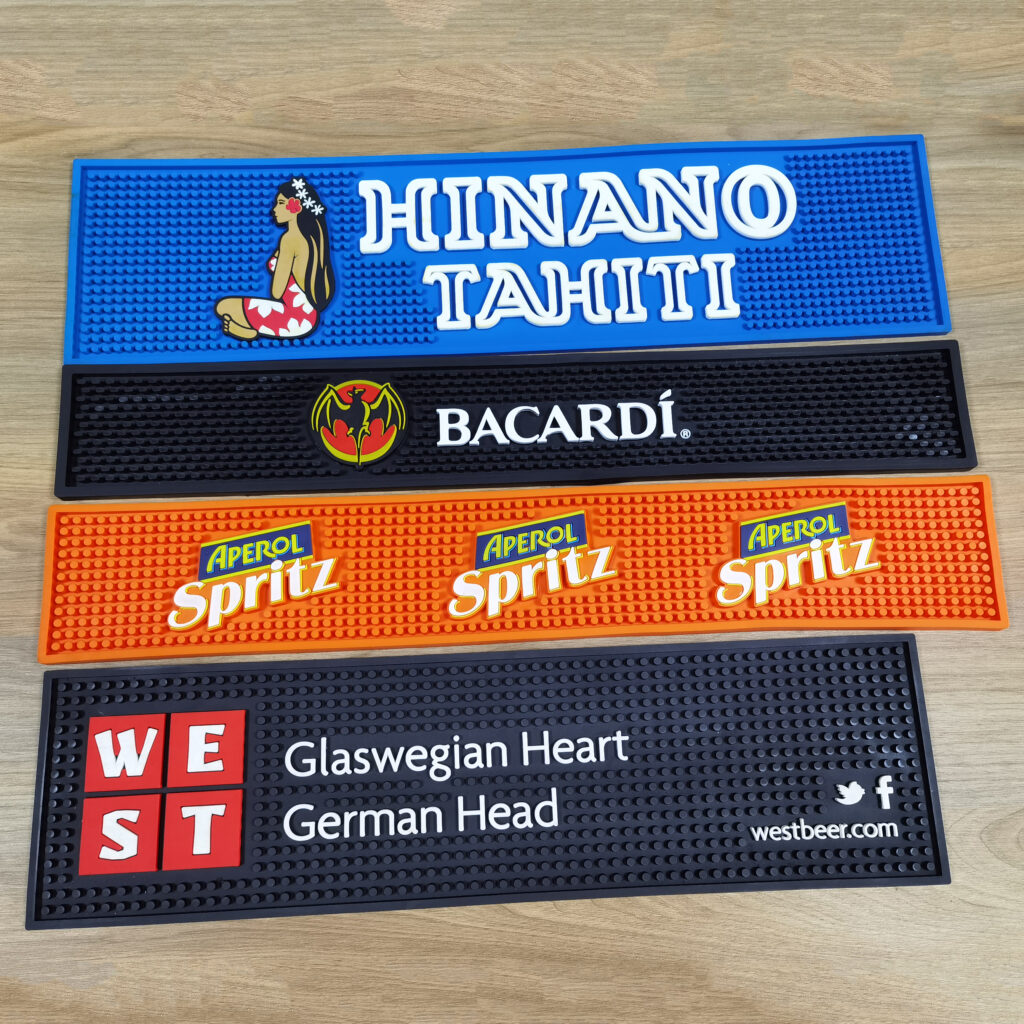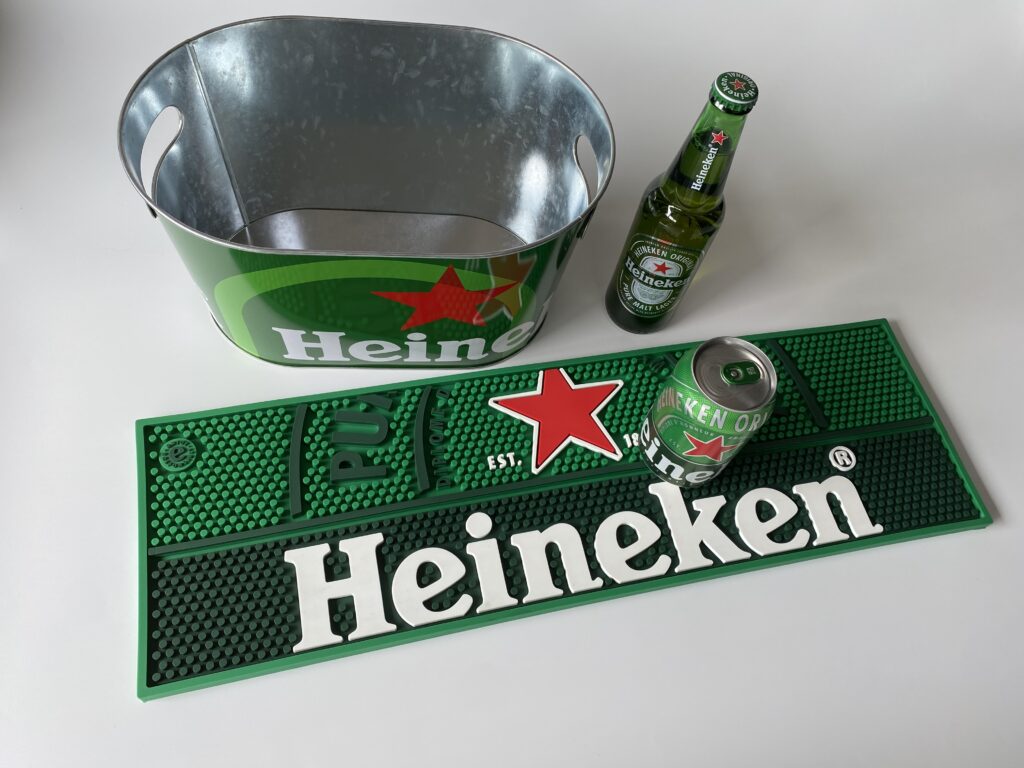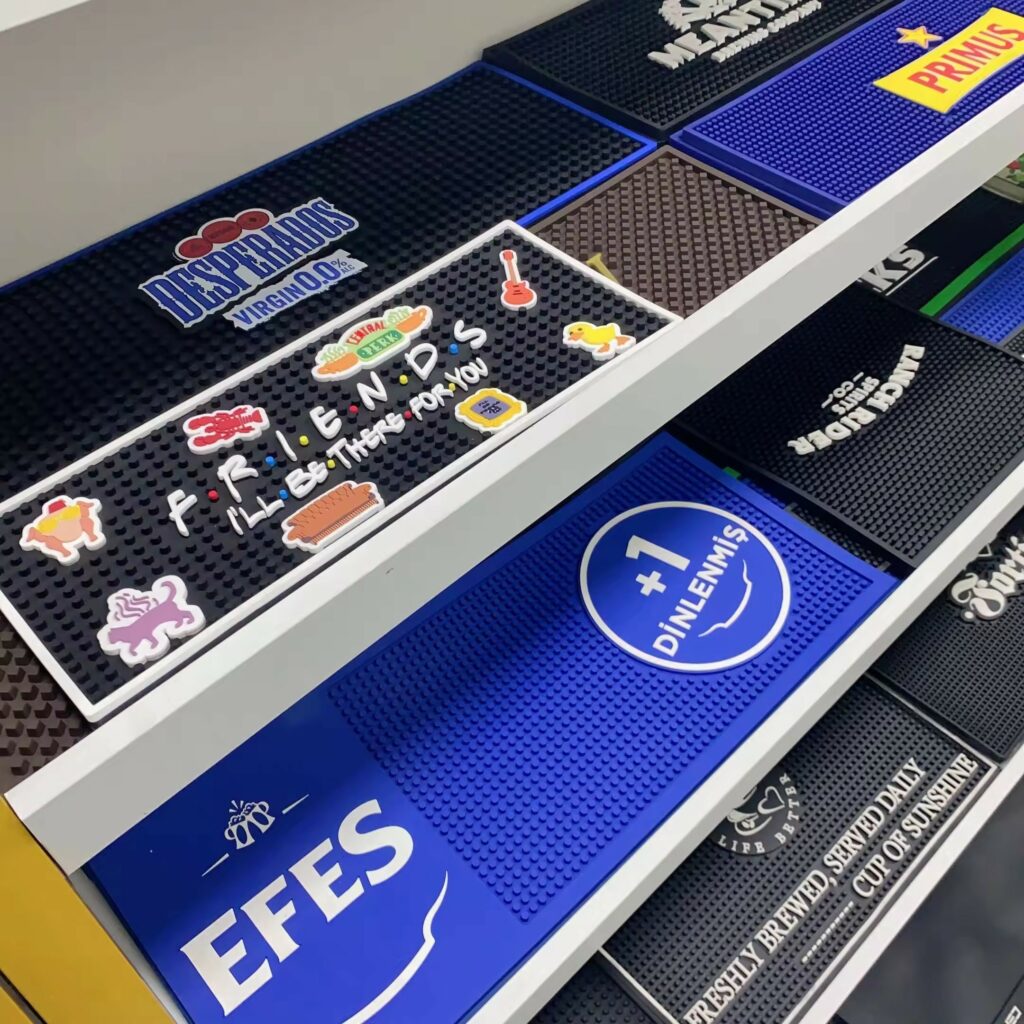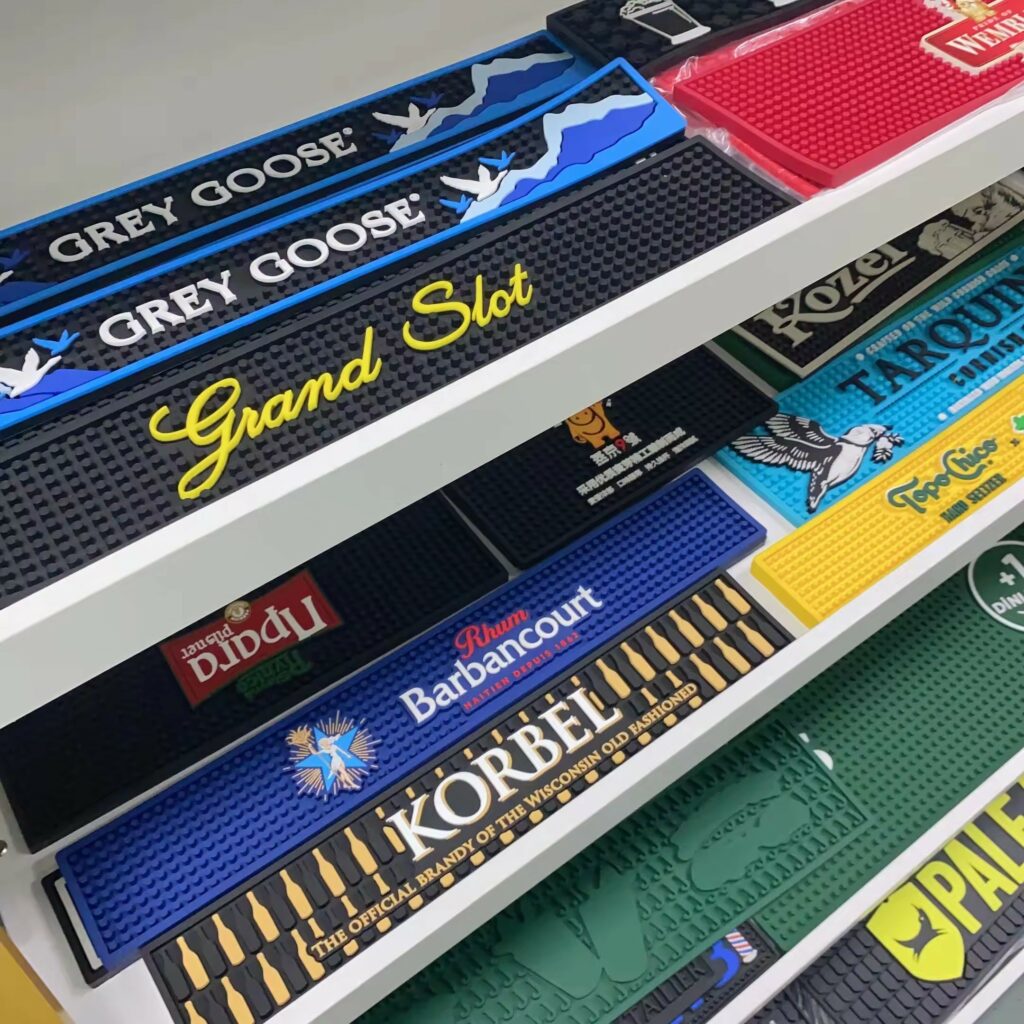When it comes to outfitting your home bar, commercial bar, or kitchen countertop, bar mats play a crucial role in maintaining cleanliness, organization, and functionality. Two of the most popular types of bar mats are made from silicone and PVC (polyvinyl chloride). While both materials are designed to keep your bar top dry and mess-free, they offer distinct advantages and limitations. In this blog post, we will explore the key differences between silicone and PVC bar mats to help you choose the best one for your needs.
1. Material Composition and Durability
Silicone Bar Mats: Silicone is a synthetic rubber material that is known for its flexibility, heat resistance, and non-slip properties. It can withstand high temperatures, making it ideal for environments where hot cups or glasses might be placed on the mat. Silicone bar mats are also resistant to wear and tear, providing long-lasting performance even with regular use.
PVC Bar Mats: PVC is a plastic material that is also durable but tends to be less flexible and heat-resistant compared to silicone. PVC mats are often rigid and can become brittle over time if exposed to extreme temperatures. However, PVC mats are generally more cost-effective than silicone ones, making them a popular choice for budget-conscious establishments.

2. Non-Slip Properties
Both silicone and PVC mats are designed to prevent glasses and bottles from slipping, but there is a notable difference in their effectiveness.
Silicone Bar Mats: Silicone mats have excellent non-slip properties due to their naturally grippy surface. They are highly effective in keeping glassware and bottles in place, even when there’s moisture or condensation. This makes them ideal for bars, especially in high-traffic settings.
PVC Bar Mats: PVC mats also have non-slip properties, but they may not be as effective as silicone. While they work well in most situations, the grip can deteriorate over time, especially if the mat gets dirty or exposed to liquids frequently.
3. Ease of Cleaning and Maintenance
Silicone Bar Mats: Silicone is very easy to clean. It is typically dishwasher-safe, and any spills or residue can be wiped away with minimal effort. Silicone mats are resistant to staining, and their surface doesn’t absorb liquids, which makes them more hygienic in the long run.
PVC Bar Mats: PVC mats can be cleaned easily as well, but they are more prone to staining, especially with dark liquids like wine or coffee. While they can be wiped clean, deep cleaning may require more effort, and their surface may retain odors more easily compared to silicone.

4. Aesthetic Appeal and Design
Silicone Bar Mats: Silicone bar mats tend to have a sleek, modern look and are available in a variety of colors and styles. Their flexible nature allows for custom designs, and many silicone mats feature a textured surface that not only helps with grip but also adds visual appeal.
PVC Bar Mats: PVC mats often have a more utilitarian appearance and may be limited in design options compared to silicone. However, they are available in a wide range of sizes and are frequently seen in commercial settings. PVC mats can sometimes feature a raised logo or design, which can be a great branding opportunity for businesses.
5. Price and Value for Money
Silicone Bar Mats: Silicone bar mats are typically more expensive than PVC mats. However, their superior durability, heat resistance, and ease of cleaning make them a worthwhile investment, especially for those who want a high-quality product that will last longer.
PVC Bar Mats: PVC mats are generally more affordable, making them an attractive option for those on a budget or those outfitting a larger number of bars or counters. While they may not have the same longevity as silicone mats, their low cost can make them a more practical choice for short-term or high-volume environments.
6. Temperature Resistance
Silicone Bar Mats: Silicone mats can tolerate higher temperatures than PVC, making them suitable for situations where hot cups, mugs, or bottles might be placed directly on the mat. They are a great option for bars that serve hot drinks or cocktails, as they won’t warp or melt under heat.
PVC Bar Mats: PVC mats have a lower heat tolerance and can warp or degrade if exposed to high temperatures for prolonged periods. They are better suited for cold drinks and beverages but may not hold up well if exposed to hot items.

7. Environmental Impact
Silicone Bar Mats: Silicone is a more eco-friendly option compared to PVC, as it is non-toxic, reusable, and generally more durable. Some silicone products are even recyclable, though the recycling process can be more limited compared to more conventional plastics.
PVC Bar Mats: PVC is a plastic, which means it is not as eco-friendly as silicone. It is not biodegradable, and while it can be recycled, the recycling process for PVC is often more complex. Additionally, the production of PVC mats can result in the release of harmful chemicals into the environment.
Conclusion: Which One Should You Choose?
When choosing between silicone and PVC bar mats, it ultimately depends on your specific needs and budget. If you’re looking for a durable, heat-resistant, and easy-to-clean mat that offers long-term value, silicone is the better choice. However, if you’re on a budget and need a basic mat for less demanding environments, PVC could be the more cost-effective option.
Consider your bar’s usage, the types of beverages you serve, and how much wear and tear the mat will endure. With the right choice, your bar mat will not only keep your countertop clean and organized but will also enhance the overall look and feel of your bar space.


